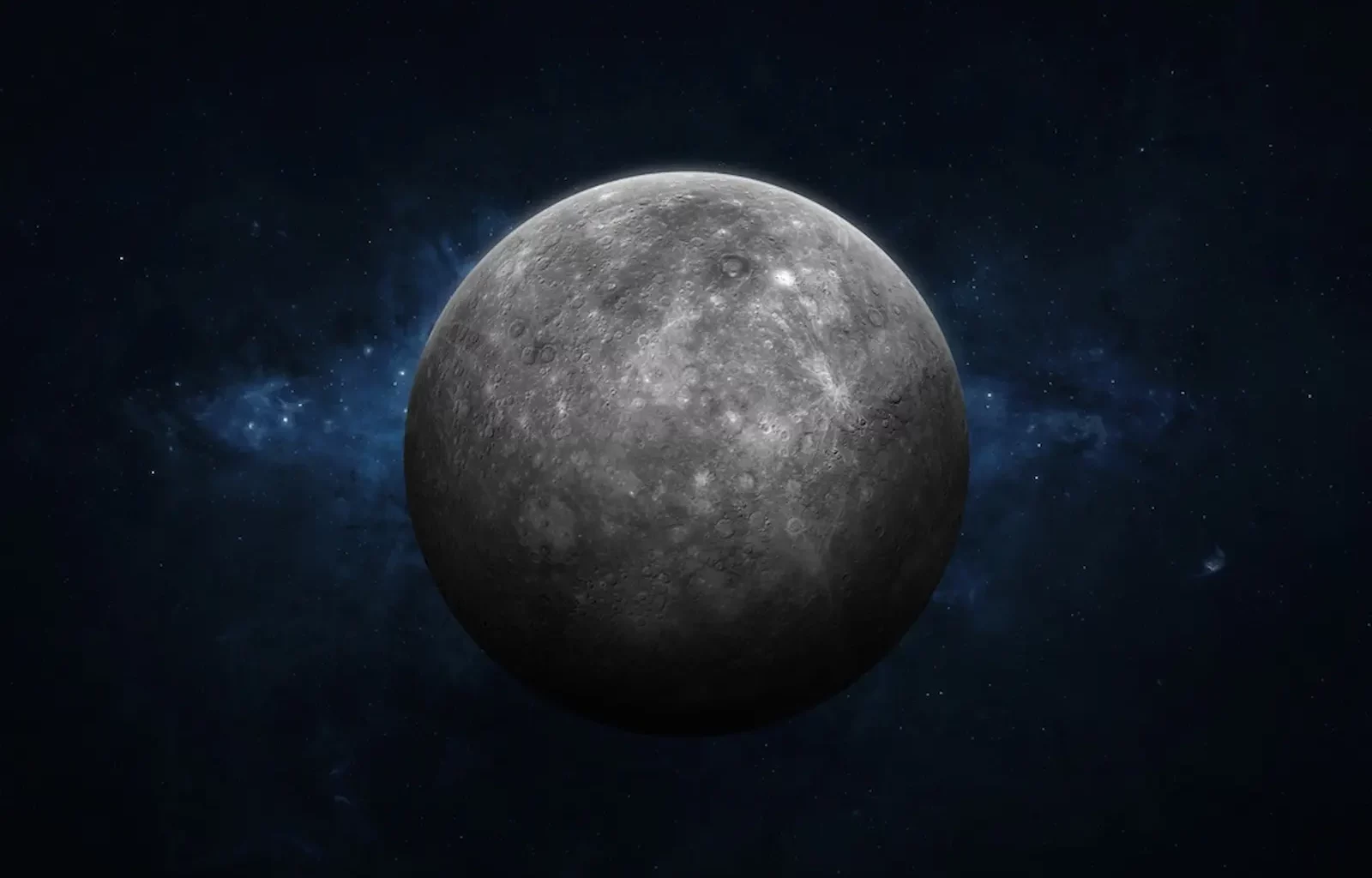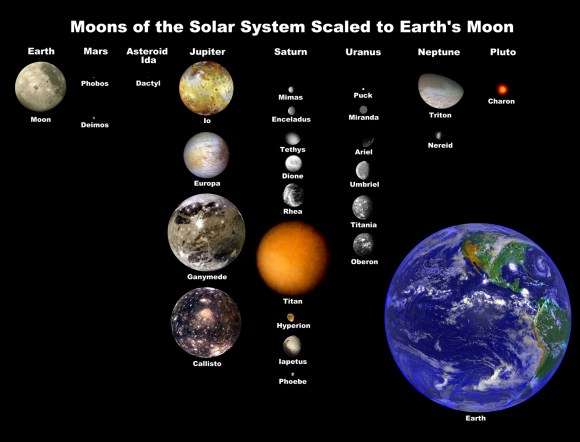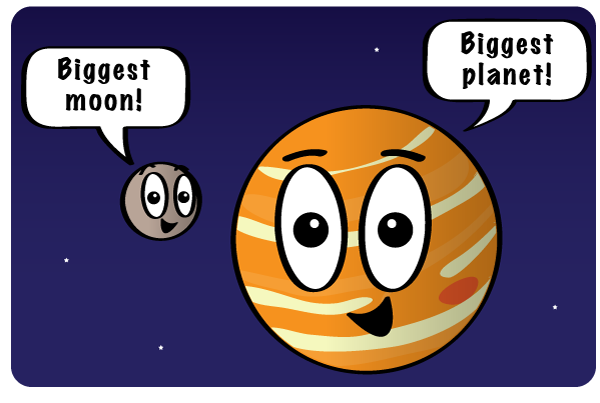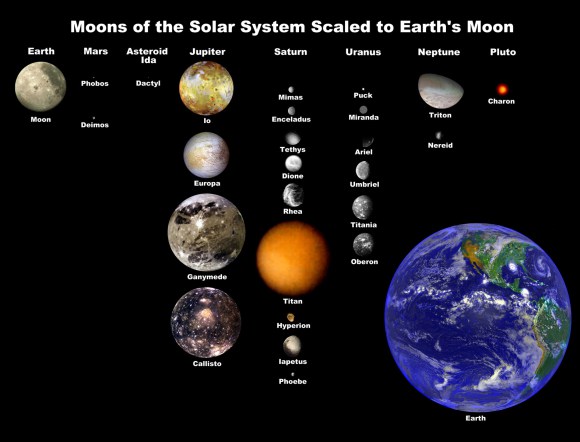Mercury does not have any moons. This lack of natural satellites sets Mercury apart from other planets.
Mercury, the closest planet to the Sun, is unique in our solar system for its lack of moons. Without any natural satellites, Mercury stands alone among the planets. Despite its small size and proximity to the Sun, Mercury’s characteristics make it a fascinating subject of study for scientists and astronomers.
This planet’s mysterious qualities and barren landscape have intrigued researchers for generations. Join us as we explore the enigmatic world of Mercury and uncover the secrets hidden within its rocky terrain.
Introduction To Mercury
Mercury is the closest planet to the Sun and the smallest planet in our solar system. It is named after the Roman god of commerce and communication. With its proximity to the Sun, Mercury experiences extreme temperatures, ranging from scorching hot during the day to freezing cold at night. Despite its small size, Mercury has captivated scientists and astronomers for centuries.
Mercury At A Glance
- Size: Mercury is the smallest planet in our solar system, with a diameter of about 4,879 kilometers.
- Distance from the Sun: Mercury is located about 57.9 million kilometers away from the Sun.
- Orbit: It takes approximately 88 Earth days for Mercury to complete one orbit around the Sun.
- Surface: The planet’s surface is rocky and heavily cratered, resembling the Moon in many ways.
- Atmosphere: Unlike Earth, Mercury has a very thin atmosphere consisting mainly of helium and traces of other gases.
The Importance Of Moons In The Solar System
Moons play a crucial role in the solar system. They not only provide aesthetic beauty but also contribute to the stability and balance of their parent planets. Moons help regulate the tilt of a planet’s axis, which influences its climate and seasons. They also exert gravitational forces that affect the planet’s tides.
While some planets in our solar system have multiple moons, Mercury does not have any moons. This absence of moons may be due to its close proximity to the Sun, which makes it more challenging for Mercury to capture and retain any natural satellites. Nevertheless, studying Mercury’s lack of moons provides valuable insights into the formation and dynamics of planetary systems.

Credit: www.skymania.com
The Moon Count Of Planetary Neighbors
Have you ever wondered how many moons your favorite planet has? Well, wonder no more! In this article, we’ll explore the moon count of our planetary neighbors. Let’s start with Earth’s solitary satellite.
Earth’s Solitary Satellite
Our very own planet Earth has just one moon, which we call the Moon. It’s the fifth-largest natural satellite in the solar system, and it’s the largest relative to the size of its host planet. The Moon has been a source of fascination for humans for thousands of years, inspiring myths, legends, and even space exploration.
Jovian Giants And Their Moons
The gas giants Jupiter, Saturn, Uranus, and Neptune are known as the Jovian planets, and they all have multiple moons. Let’s take a closer look at each of these planets and their moon counts:
| Planet | Number of Moons |
|---|---|
| Jupiter | 79 |
| Saturn | 82 |
| Uranus | 27 |
| Neptune | 14 |
As you can see, Jupiter and Saturn have the most moons, with a whopping 79 and 82, respectively. Most of these moons are small and irregularly shaped, and some are believed to have been captured asteroids or comets.
Uranus and Neptune, on the other hand, have fewer moons, but they’re more interesting. Some of these moons are larger and have unique features, such as Miranda, which has a highly varied surface, and Triton, which is the only large moon in the solar system that orbits in the opposite direction of its planet’s rotation.
Mercury’s Moon Count
Now, let’s answer the question that brought you here: how many moons does Mercury have? The answer is none. Despite being one of the closest planets to the Sun, Mercury doesn’t have any moons. In fact, it’s the only planet in the inner solar system that doesn’t have any moons.
While it may be disappointing to some, Mercury’s lack of moons doesn’t make it any less interesting. This small, rocky planet has a lot of unique features, such as a heavily cratered surface, a magnetic field, and a very slow rotation that causes its day to be longer than its year.
Mercury’s Moon Mystery
Mercury, the smallest planet in our solar system, has been a subject of curiosity for astronomers for centuries. While most of us know that Earth has one moon, the moon mystery surrounding Mercury has puzzled scientists for years. In this article, we will explore the early observations and theories about Mercury’s moons, as well as the modern discoveries and clarifications that have shed light on this intriguing phenomenon.
Early Observations And Theories
In the early days of astronomical observations, scientists believed that all planets in our solar system had moons. Therefore, it was assumed that Mercury, being a planet, must also have at least one moon. However, as technology advanced and telescopes improved, astronomers faced a perplexing challenge – they could not detect any moons orbiting Mercury.
This led to various theories and speculations about the absence of moons around Mercury. Some scientists proposed that any moons that may have once existed around Mercury could have been lost due to gravitational interactions with the Sun or other celestial bodies. Others suggested that the intense heat and radiation from the Sun might have prevented the formation of any moons around Mercury.
Modern Discoveries And Clarifications
As scientific advancements continued, new observations and data collection techniques revealed more about the moons of Mercury. It was not until the Mariner 10 spacecraft flew by Mercury in the 1970s that the mystery started to unravel. Mariner 10 confirmed that Mercury indeed had no moons.
Further exploration by the Messenger spacecraft, which orbited Mercury from 2011 to 2015, provided valuable insights into the reasons behind the absence of moons. Messenger’s observations indicated that Mercury’s proximity to the Sun and its relatively weak gravitational pull make it difficult for the planet to capture and retain moons. The Sun’s gravitational forces are so strong in the vicinity of Mercury that any object orbiting the planet would be pulled away or destabilized.
Additionally, Messenger’s data suggested that Mercury’s small size and its lack of a substantial atmosphere also contribute to the absence of moons. The planet’s weak gravitational field and lack of significant atmospheric drag make it challenging for any potential moons to remain in stable orbits.
In conclusion, despite early speculations and theories, modern scientific exploration has confirmed that Mercury does not have any moons. The planet’s close proximity to the Sun, its weak gravitational pull, and its small size all contribute to the moon mystery surrounding Mercury. Understanding these factors is crucial for unraveling the mysteries of our solar system and deepening our knowledge of planetary dynamics.

Credit: phys.org
Factors Influencing Moon Formation
Mercury, the smallest planet in our solar system, does not have any moons due to its proximity to the Sun. The formation of moons is influenced by factors like gravitational forces and the distance from the parent planet.
Mercury Compared To Earth’s Moon
Mercury does not have any moons, unlike Earth, which has one moon. This key difference sets the two celestial bodies apart in terms of their planetary features.
Surface Features And Composition
When comparing Mercury to Earth’s Moon, it is fascinating to explore the differences in their surface features and composition. Mercury, the closest planet to the Sun, is known for its rugged and heavily cratered surface. It is covered in a layer of regolith, which is a mixture of loose rock, dust, and debris. The planet’s surface is composed mainly of silicate minerals like basalt and feldspar, similar to the composition of Earth’s crust.
In contrast, Earth’s Moon, also known as Luna, has a surface that is relatively smoother compared to Mercury. The Moon’s surface is characterized by vast plains called maria, which are formed by ancient volcanic activity. These maria are composed of basaltic rock, rich in iron and magnesium. While both Mercury and the Moon have impact craters, they differ in terms of their size and distribution. Mercury’s craters tend to be larger and more numerous, indicating a higher frequency of meteoroid impacts. On the other hand, the Moon’s craters are generally smaller and more concentrated in certain areas.
Orbital Characteristics
In terms of their orbital characteristics, Mercury and Earth’s Moon also exhibit distinct differences. Mercury orbits the Sun in an elliptical path, with an average distance of about 58 million kilometers. Its orbit is highly eccentric, meaning it deviates significantly from a perfect circle. This eccentricity results in extreme temperature variations on the planet’s surface, ranging from scorching hot to freezing cold. On the other hand, Earth’s Moon orbits around Earth in a nearly circular path, at an average distance of about 384,400 kilometers. The Moon’s orbit is relatively stable and has a minimal eccentricity, leading to more consistent temperatures on its surface.
Another notable difference is the orbital period of each celestial body. Mercury takes approximately 88 Earth days to complete one orbit around the Sun, while the Moon completes its orbit around Earth in about 27.3 Earth days. In conclusion, when comparing Mercury to Earth’s Moon, we can observe distinct differences in surface features, composition, and orbital characteristics. Mercury’s rugged surface and composition resemble that of Earth’s crust, while the Moon’s smoother surface is dominated by basaltic rock.
Additionally, Mercury’s eccentric orbit results in drastic temperature variations, whereas the Moon’s nearly circular orbit provides more stable temperatures. These unique attributes make both Mercury and the Moon fascinating objects to study in our solar system.
Impact Of No Moons On Mercury
Effects On Mercury’s Environment
The absence of moons has significant effects on Mercury’s environment. The lack of a moon means that Mercury experiences greater temperature variations between its day and night. With no moon to help stabilize its axial tilt, Mercury’s axis can tilt as much as 2.1 degrees, leading to extreme temperature fluctuations.
Consequences For Potential Habitability
The lack of moons has major implications for Mercury’s potential habitability. Without the gravitational influence of a large moon, Mercury is bombarded by solar wind and radiation. The absence of a moon also leads to a lack of tidal forces, which could impact the planet’s internal dynamics and potential for liquid water.
Space Missions To Mercury
Mercury, the closest planet to the Sun, does not have any moons. Despite several space missions sent to explore this small, rocky planet, no natural satellites have been discovered orbiting around Mercury. This unique characteristic sets Mercury apart from other planets in our solar system.
Historical Missions And Findings
Early missions provided valuable insights about Mercury’s geological composition.
Future Missions And Expectations
Upcoming missions aim to uncover more mysteries about Mercury’s surface.

Credit: spaceplace.nasa.gov
Common Misconceptions About Mercury
Mercury, the closest planet to the sun, is often misunderstood when it comes to its moons. Contrary to popular belief, Mercury actually has no moons orbiting around it. This common misconception stems from the confusion caused by its proximity to the sun and the lack of visibility of any potential moons.
Debunking Mythical Moons
Clarifying Astronomical Facts
Mercury, the smallest planet in our solar system, often falls victim to common misconceptions. Let’s delve into the truth behind some of these myths.
Debunking Mythical Moons
Misconception: Some believe Mercury has multiple moons like Earth.
Fact: Mercury has zero moons, unlike our planet which has one.
Clarifying Astronomical Facts
Misconception: Mercury has more moons hiding behind the sun.
Fact: Mercury is moonless, with no hidden satellites in its orbit.
Frequently Asked Questions
How Many Moons Does Mercury Have?
Mercury does not have any moons. It is one of the two planets in the solar system, along with Venus, that does not have any moons orbiting around it.
Why Doesn’t Mercury Have Any Moons?
The proximity of Mercury to the Sun and its weak gravity make it difficult for the planet to capture and retain moons in its orbit.
Could Mercury Have Had Moons In The Past?
It is possible that Mercury had moons in the past, but they may have been pulled into the Sun’s gravitational influence or ejected from the planet’s orbit over time.
Conclusion
While Mercury is the smallest planet in our solar system, it still packs a punch in terms of its moons. Scientists have confirmed the existence of just one moon, but there may be others yet to be discovered. As we continue to learn more about Mercury and its moons, we gain a deeper understanding of the complex and fascinating universe that surrounds us.


